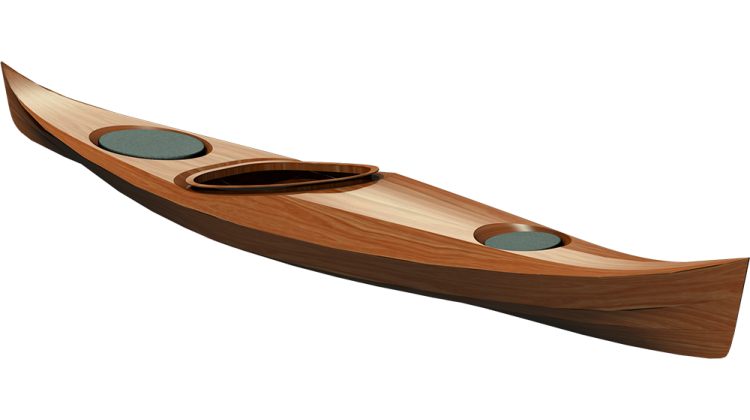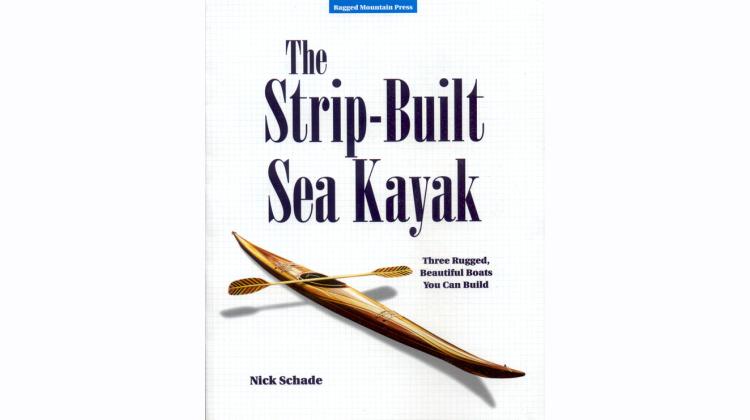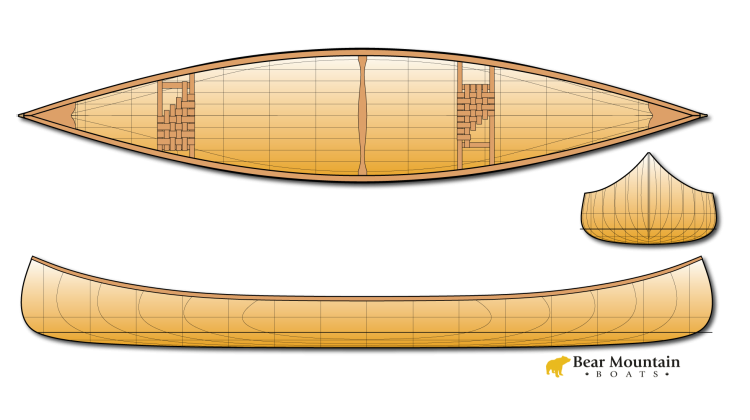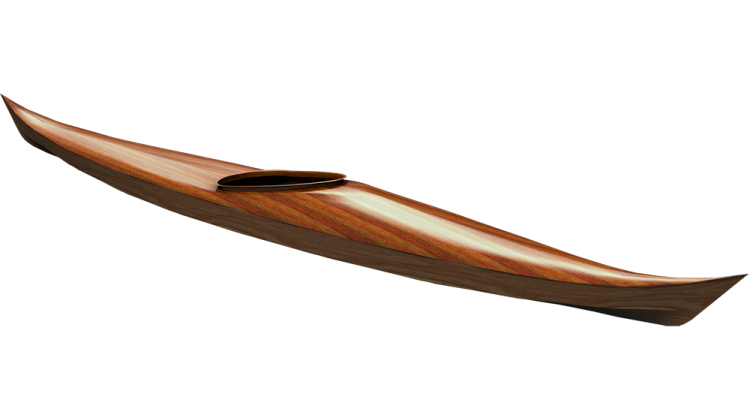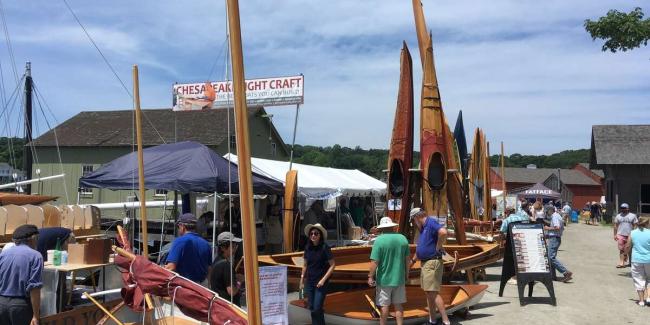Let's get this clear from the start: it is a waste of time to build your own wooden boat. These days there are far quicker ways to get yourself on the water than going down to a basement shop, fooling around with a bunch of weird tools, making a big mess, and spending time being careful to do it right. You can go out to the local boating store and buy a boat ready to go that will be perfectly serviceable, getting you where you want to go with a lot less fuss and bother.
Instead of wasting your time building a boat you could be at work earning more money, so you can afford the really high-quality glitter on your fiberglass boat, or maybe a hydraulic elevator to lift a plastic barge onto the roof of your car, or something else useful.
There are few reasons to build a wooden boat that make practical sense on a cost-benefit chart, but for some reason lots of people still want to do it. It may be that they just enjoy the process of converting a raw board into a mode of transportation. I think there is more to it than just an excuse to buff the rust off their tool collection. There is some ineffable quality to wood boats that makes them attractive. The quality goes beyond the strict physical appearance because even rather ordinary-looking boats are attractive when built of wood. Wood grain lends an eye-catching complexity to a surface that simply can't be achieved with synthetic materials.
Building a boat is a big project. It takes time, some physical effort, and a lot of concentration and thought. If all you are looking for is a nice boat, there are plenty of other options out there. If you want an inexpensive craft to go fishing in, there are cheaper options available than building one yourself. If all you really want is a pretty wooden vessel, you may be better off getting someone else to build it for you. Don't take on the task if the idea of the project itself does not appeal to you. On the other hand, building a boat is a break from a world of instant gratification and impending deadlines. You will probably end up bleeding or with a painful splinter at some point during the project. It is very possible that the job will cause you to get angry and swear. But it is also a chance to invest time in making something of value with your own hands.
There is something special about boats. Lots of projects can satisfy the bug to build things, but there are few projects accessible to the average do-it-yourself craftsperson that you can travel in. Unlike a bookshelf, a boat isn't just another inanimate object; it is a partner in exploring new territory. Creating this partner with your own hands, deliberately fitting each piece in place, bleeding on it, dripping sweat as you proceed, and agonizing over each detail fills the vessel with value. It is the challenge and time that you put into it that makes the project worth doing.
The Strip-Building Method
Over the thousands of years that humans have been building small vessels for venturing out on the water, people have created hundreds of different methods for constructing those craft. Traditional boatbuilding typically involves creating a frame and a waterproof shell. The frame usually provides the structural strength of the boat while the outer surface is primarily a means of keeping water out so the boat will float. The frame will often consist of some form of backbone, such as a keel, plus ribs supporting the shell. The backbone provides the basis for strength along the length of the boat. The ribs define the shape of the boat and back up the outer shell. The shell may be in the form of planking, or in the case of traditional kayaks it may just be a layer of sealskin.
A more recent technique fastens multiple small wood strips edge to edge and then encapsulates this shell under layers of fabric and glue. This is the strip-building or strip-planking method. With strip-built construction, the outer shell provides both the structure and the watertight integrity of the boat. This monocoque (French for "single shell") structure includes the strength of the ribs and backbone into the waterproof skin of the boat in one integrated, lightweight, and strong piece. In traditionally built small boats, such as a canoe or Adirondack guide boat, the outer surface was 1/4-inch-thick (6 mm) cedar supported by a structure of ribs every 4 or 5 inches (10 to 12 cm) held in place with small tacks or screws. In a strip-built boat the strip thickness may still be 1/4 inch or less, but the ribs have been replaced with a woven fabric such as fiberglass, Kevlar, or carbon fiber adhered to the wood with epoxy resin.

Traditionally boats were built with a backbone like keel with ribs defining the shape. This frame of ribs was then covered with planks to make a watertight hull. The frame provided most of the strength. While the planks provided some strength, without the ribs supporting them, they would split. In strip construction a “monocoque” shell provides both the strength and the watertight shell. The thin outer planks are reinforced across the grain with fiberglass fabric secured and sealed in place with epoxy resin.
You may notice that the title of this book refers to strip-planked boats, yet I often use the term strip-built. In traditional boatbuilding methods, planks are fairly heavy boards that you fasten to a structure of internal frames, but in the method described in this book, there are no internal frames; the "planks" are very thin strips of wood that, in themselves, represent much of the boat's structure. That's why I use the term strip-built most often, but it means the same thing as strip-planked.
Strip-building is simple in concept: bend a bunch of narrow, flexible strips around a set of forms, and cover them with a waterproof reinforcement. And--unlike many seemingly simple concepts--it is actually relatively simple to do. The strip-built method is well suited for making small boats with minimal tools. It doesn't require extensive training or skill, and it is tolerant of mistakes. While first-time builders may have trouble building a boat that looks exactly how they want, it is very likely that they will build a boat that performs the way they want. It is the nature of the strip-built method that big mistakes are hard to make, and little ones don't hurt.
Because the wood is encapsulated in fiberglass and epoxy, it is quite certain that the finished boat will not leak, even if elsewhere your craftsmanship is not perfect. The epoxy seals all but the largest holes. The fiberglass also reinforces weak joints, making them much stronger. With the wood under a protective coat of epoxy and fiberglass it will not rot. Because the fiberglass and epoxy are perfectly transparent, the full beauty of the wood shines through.
Some builders of larger boats use a technique, also called strip-planking, in which strips of wood that are the same thickness as traditional boat planks, but narrower from top to bottom, are secured together with glue and maybe some nails, but they don't necessarily sheathe the wood in fabric and resin. This technique works well for larger boats that need thicker planking, but for small, lightweight boats, the fiberglass or other reinforcing fabric saturated with epoxy or other resin is a critical part of the building process. Since this book is tailored toward small, car-toppable boats, it assumes all the wood will be encapsulated in resin and fabric.
This "composite" structure comprising wood, glass, and plastic overcomes a lot of problems with wood boat construction while giving many advantages over standard modern fiberglass construction. The epoxy seals the wood from exposure to moisture, virtually eliminating the possibility of rot. The elimination of fasteners like nails and screws does away with localized stress concentrations that can cause failures. And wood is one of the most structurally efficient materials available. This means that for a given weight of material you will be able to make a stiffer panel from wood than any other material. Although wood is soft and easily scratched, the layer of fabric and resin protects the surface.
Traditional boatbuilding requires high-quality wood. Since the wood provides all the structural strength, poor grain can create serious weaknesses. Because of the way the wood functions in the structure, strip-building is much more tolerant of lower-quality wood and squirrelly grain. The sandwich of fiberglass-wood-fiberglass acts much like a steel I-beam.
In an I-beam primarily the top and bottom flanges carry the load. The vertical web in between just keeps the two flanges separated. As a result the flange on the outside of the bend is stretched or in tension and the flange on the inside is compressed. The web in between is also in compression. Strip-built construction works the same way, with the fiberglass taking the place of the flanges and the wood acting as the web. Because wood is strongest in compression the result is very strong for its weight.

The lightweight strength of the strip-planked shell is achieved in the same way an I-beam keeps a bridge strong and lightweight. In an I-beam the webs at the top and bottom of the vertical spacer carry most of the force. If these webs were not separated they would bend easily, but by spacing them apart, they must either stretch or shrink before the beam bends. On a strip-planked boat, the wood acts as the separator and the fiberglass replaces the web.
In brief, the process of strip-building a boat consists of making a building form, covering the form with wood, covering the wood with fiberglass, covering the fiberglass with epoxy, covering the epoxy with varnish, and then finally covering the varnish with scratches as you use the boat. Stated this way it sounds pretty easy. Obviously the details are important, but it helps to think of it in these simple terms.
The forms are a series of sections, like slices of bologna, that define the shape of the boat. These forms are secured to a strongback, the supporting structure that holds the forms in their correct location and orientation. Careful setup of the strongback and forms assures the finished boat is the desired shape.
A lightweight softwood such as cedar or pine is generally used. The wood is cut into thin strips about 1 inch (2.5 cm) by 1/4 inch (6 mm), or a bit less. This wood is edge-glued together and temporarily secured to the forms with staples. When the forms have been completely covered, the staples are removed and the wood is smoothed with scrapers, planes, and sandpaper.
The lightweight fabric (fiberglass, Kevlar, or carbon) is draped over the prepared wood and trimmed to size. Epoxy resin is then poured and brushed onto the fabric. This bonds the cloth to the wood, and in the case of fiberglass, the fabric becomes completely clear. When the epoxy cures, the shell of the boat is removed from the forms. After smoothing the inside of the boat, the inside is similarly reinforced with fabric and epoxy.
With decked boats like kayaks, the deck and hull are then joined together. More epoxy is added to the outside of the boat to smooth out the fabric texture. This is then sanded smooth. Any outfitting such as seats or gunwales can now be added. Finally, everything receives a protective coat of varnish. Varnish not only enhances the appearance of the boat but also protects the epoxy from sun damage. Every few years you will want to give it a light sanding and reapply the varnish. With a minimum amount of care, you can
What You Need to Build a Boat
The tools required to build a strip-built boat are modest. One of my primary tools is an old Swiss Army knife given to me by my grandmother when I was a kid. The only large power tool needed is a table saw to cut the strips. If you don't have one, you will need to borrow a table saw for half a day or so. In addition, you will need some small tools like a block plane, a handsaw, and a sander.
You will need a covered workspace with some control over the temperature. (Remember, the space needs to be a few feet larger than the boat!) You also need a way to get the boat out of the shop. Taking a wrecking bar to the house to extricate a finished boat is more common than people would like to admit, but that doesn't mean it is fun.
Building a boat takes time. You will need some patience. The boat won't be finished tomorrow, but that is part of the beauty of the project. You are putting quality time into making a quality object. You need to be able to resist the urge to take shortcuts. If you want instant gratification, just go out and buy a boat.
Most important, you need a comfy chair in your shop. This is called the "moaning chair." It is there to catch you when you cut your last piece of good wood too short or drill a hole below the waterline. This piece of furniture is a key tool you will use to prevent taking a chainsaw to your project. Remember that almost everything can be fixed if you spend enough time sitting in the moaning chair to come up with a solution. While strip-building is a pretty fault-tolerant means of making a boat, it is inevitable that somewhere along the way you will make use of the moaning chair.
Three Strip-Building Projects
The first ten chapters of this book detail the tasks and methods involved in just about all strip-built boatbuilding projects. The last three chapters describe three boats that you can build using those techniques and demonstrate several design-specific tasks such as installing gunwales and seats.
Coot, a pram-bowed dinghy, is very easy to build and an excellent first project for anyone the least bit nervous about his or her ability to build a boat. This will make a fine tender for a larger boat.
Nymph is a small solo canoe for double paddle with a few features that make it slightly more complicated, and the building as shown involves a few tricks and special materials. Consider it an intermediate-level course in strip-building.
Petrel is a sea kayak designed for rough waters. As the only fully decked boat of the three, it inherently involves a bit more work, and its cockpit, while highly functional, is also somewhat elaborate. I went all out on the example shown, tricking it out with many optional features--some functional, others cosmetic--to demonstrate how far you can take strip-building if you wish.
Strip-building a boat lets a beginning boatbuilder create a fully functional boat without a lot of skill. It lets a novice builder create a beautiful boat without compromising the performance of the result in any way, and an experienced strip-builder can produce a spectacular work of art that is lightweight, strong, and efficient on the water. There are quicker ways to make your own small boat but few that offer the combination of accessibility for the first-time builder, on-the-water performance potential, and sheer beauty of the finished product.
The goals of this book are to introduce strip-building to beginners, to provide new ideas to novice builders, and to help experienced builders bring their work to the next level. First I describe the general process and then I provide plans and instructions for three different boats. I hope that after reading this book you will have the confidence to tackle building any of the boats I describe, or just about any other small boat using these methods.
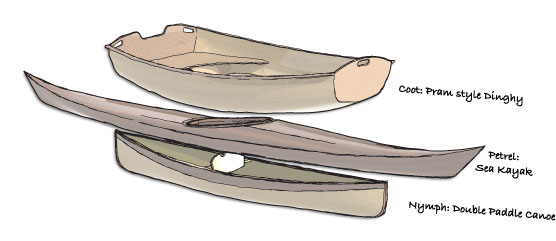
The boats used as examples in this book demonstrate a lot of techniques that are useful for building just about any small boat using the strip-planked method. Coot is a simple dinghy with transoms at both ends and plywood seats. Petrel is a sophisticated sea kayak with full deck and coaming. Nymph is a lightweight double paddle canoe with a thwart seat.
Purchase the Book



